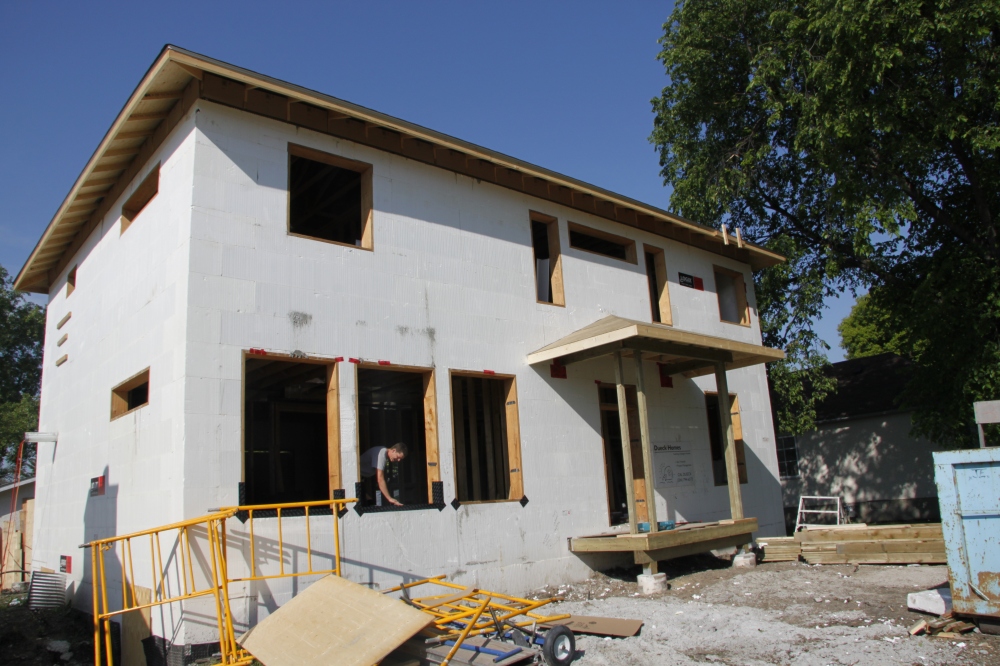The Hidden Dangers in Your Indoor Air
You’ve finally moved into your dream home—the furniture is in place, the curtains are hung, and everything looks perfect. But have you ever stopped to think about what’s in the air you’re breathing? That “new home smell” might seem fresh, but it can come with some surprising and unhealthy side effects.
As a sustainable custom home builder in Winnipeg, Dueck Builders prioritizes materials and construction methods that ensure cleaner, healthier indoor air for you and your family. Let’s explore what’s really in your indoor air and how you can improve it.
What’s in Your Indoor Air?
Volatile Organic Compounds (VOCs)
VOCs are chemicals that easily evaporate at room temperature and can be found in paints, adhesives, carpeting, and even furniture. These compounds contribute to poor indoor air quality and can cause headaches, nausea, and long-term health issues such as lung damage and cancer. To minimize exposure, we use low-VOC or zero-VOC paints, glues, and caulks in all of our projects.

No infringement intended.
Radon and Formaldehyde
Radon is a naturally occurring radioactive gas that can seep into homes from the ground. It’s the second leading cause of lung cancer after smoking. The Canadian Cancer Society has confirmed that in-home radon exposure is responsible for 16% of lung cancer deaths every year.
Formaldehyde, another serious indoor air pollutant, is commonly found in engineered wood products like OSB (oriented strand board) and some insulation materials. Long-term exposure has been linked to increased cancer risks.
To protect homeowners, we:
- Install sub-slab depressurization systems to vent radon safely outside.
- Avoid using materials with high urea-formaldehyde content.
- Design HVAC systems that balance indoor air pressure to prevent radon infiltration.
- Never use OSB inside the vapour barrier.

Microplastics
Microplastics—tiny plastic particles that come from synthetic fabrics, household dust, and even furniture coatings—are becoming a growing concern in indoor air quality. Studies suggest that inhaling microplastics could lead to respiratory issues and other health complications.
To reduce microplastic exposure in your home:
- Choose natural fiber materials for carpets, rugs, and furniture.
- Use HEPA air filters in your HVAC system to trap airborne microplastics.
- Minimize synthetic cleaning products that release microplastic particles.
- Choose wood or fiberglass windows over PVC
- Choose healthier paints (like Farrow and Ball)
How to Improve Indoor Air Quality in Your Home
Avoiding these problems is easier when you build your new home. You can take proactive steps to mitigate these unhealthy interior air problems, and be left with a healthier home for your family. To ensure you are building the healthiest, most sustainable home possible we recommend:
- Choose sustainable materials: We use non-toxic, low-emission materials in every home we build. If budget allows choose more natural products when available. Choose ICF for your basement walls to prevent mold growth!
- Proper insulation and ventilation: Our homes are designed with ERVs (Energy Recovery Ventilators) to cycle out stale air and maintain healthy indoor humidity levels. This, combined with a well detailed and installed vapour barrier and air barrier, ensures protection against mold, radon, and future rot concerns. Make sure your home breathes healthy air!
- Use hard-surface flooring: Instead of carpet, opt for hardwood, tile, or polished concrete to reduce VOCs and microplastics. It also allows for easier cleaning as a bonus!

These common healthy air components are just a few things that often get overlooked in the home building journey. These seemingly minor details make a big difference in the health and livability of your home. When building a new home, you get one shot to ensure these details are satisfactory. At Dueck Builders, we believe a truly sustainable home is one that supports your family’s health as much as it benefits the environment. If you’re planning a new home or renovation in Winnipeg, let’s talk about how we can build a cleaner, healthier living space for you.
📞 Call us at 204-806-0616
🌐 Visit our website to learn more!
